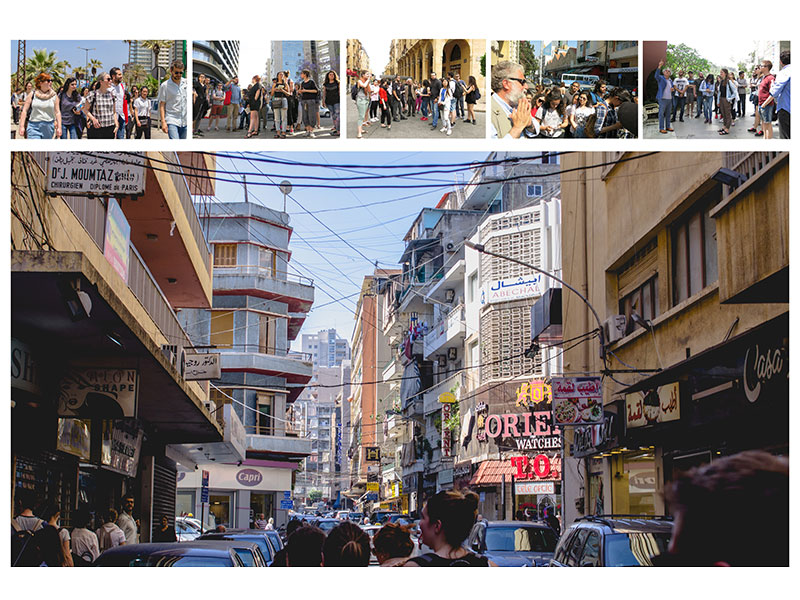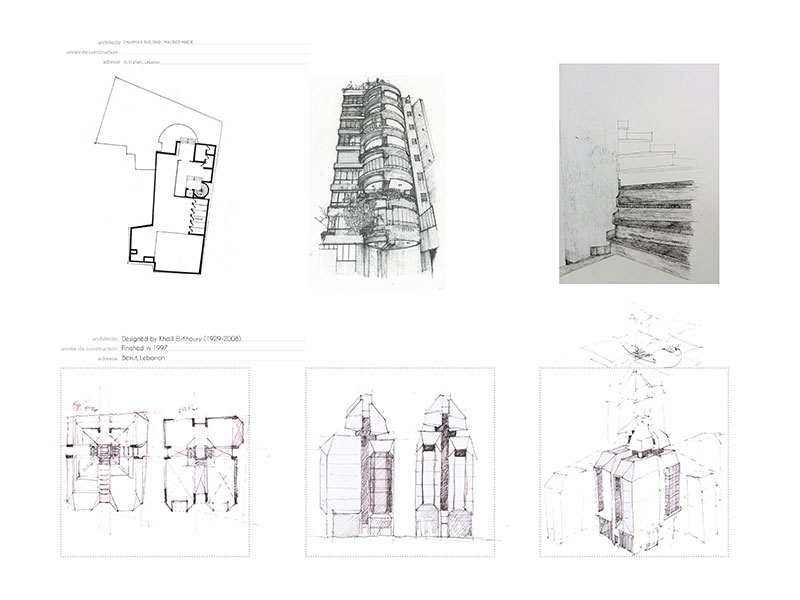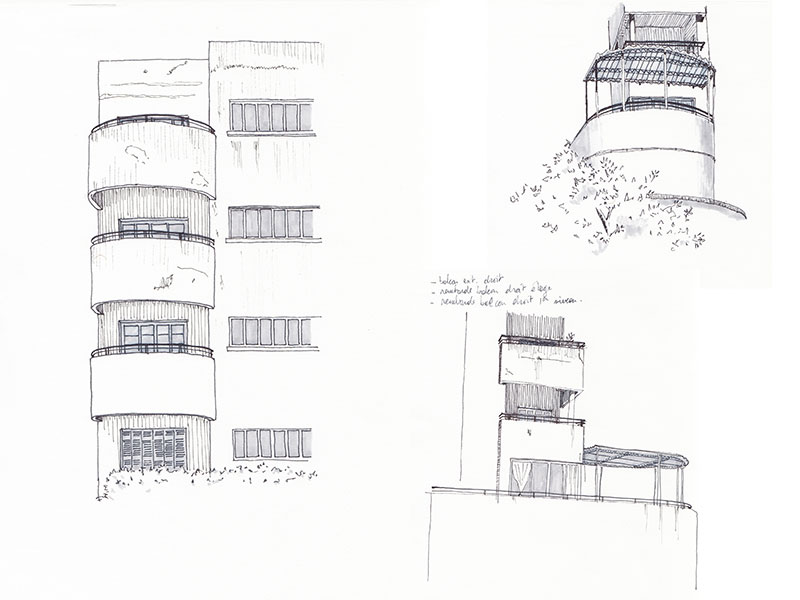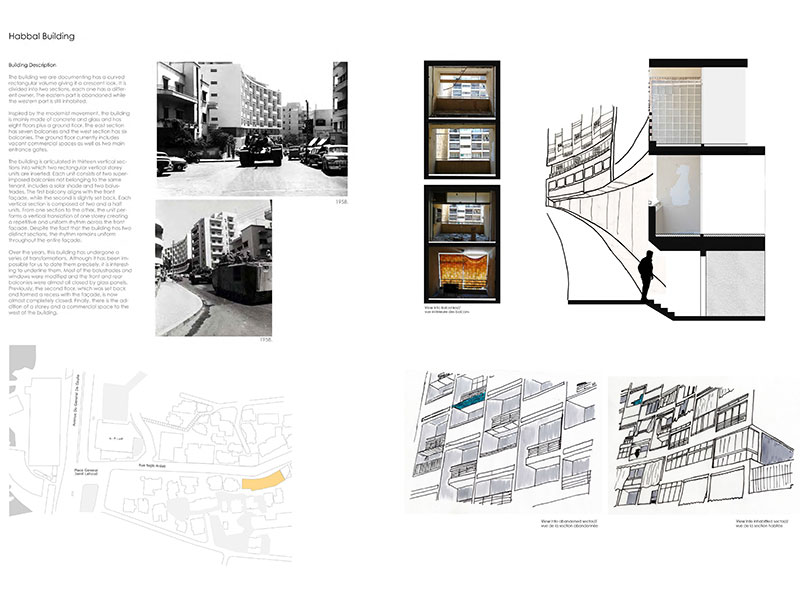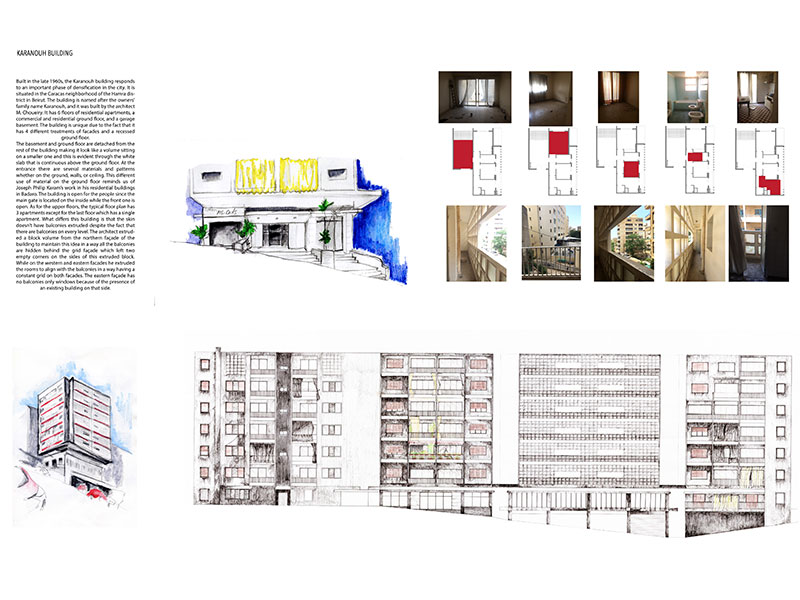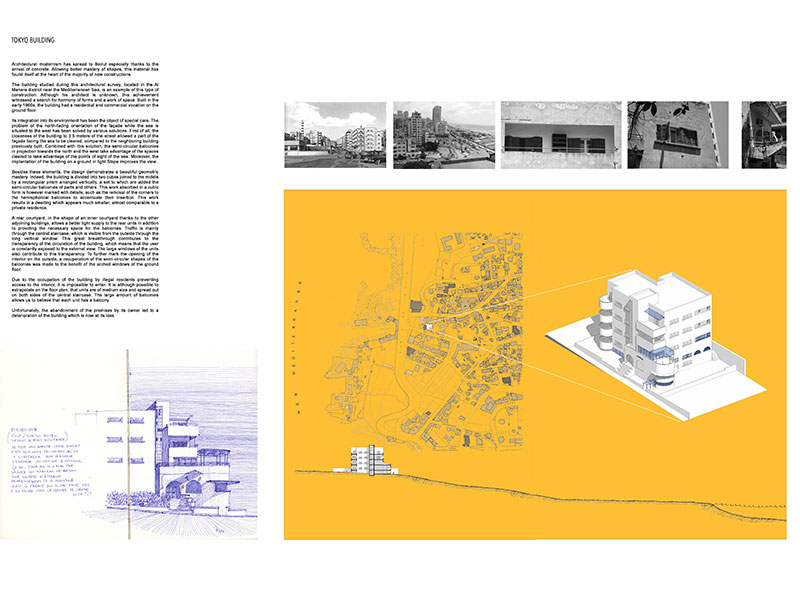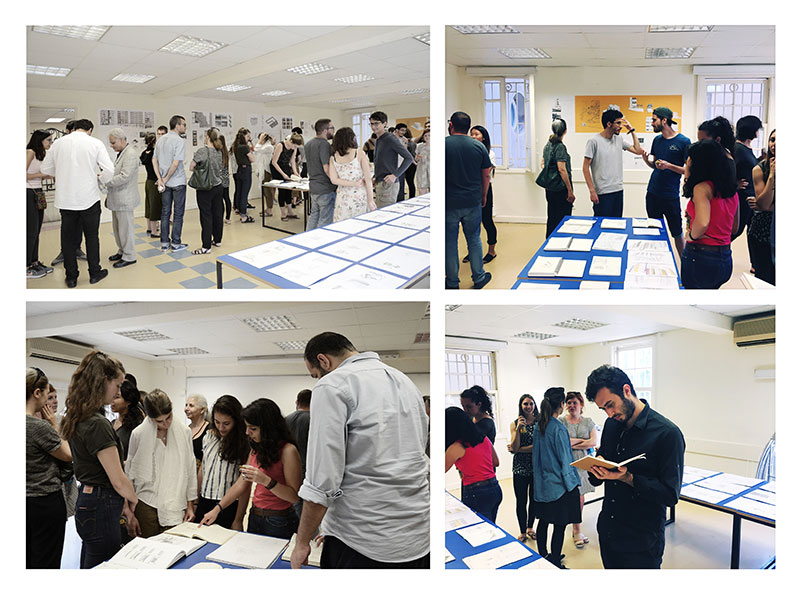Modern Architecture: From Montreal to Beirut
The group traveled across the country, exploring everything from Beirut apartment blocks to Oscar Niemeyer’s famously unfinished international fairground in downtown Tripoli. Over two weeks, students heard guest lectures and toured Badaro, Hamra, and Archrafieh as they made their way across the capital in search of Lebanon’s modernist heritage from the 50s and 60s.
Each group was assigned a building, drawing and planning as they explored a unique emphasis of the structure. Their projects, completed in just two days, highlighted the breadth of skills architecture students utilize in their practice, from blueprints to computer generated drawings to quick sketches, photographs and 3-D models.
“They have to pick elements, study these elements and explain what they mean in relation to the building,” explained professor Marwan Zouein.
“The focus was presentational, visual, but the content was very much rich in terms of partly-history, partly-related to the social and cultural history of Lebanon. Why did modernity come here, which kind?” added professor Elie Harfouche.
Modern Lebanese architecture has its routes in the country’s colonial history under the French mandate, but what was initially an imposed style became adopted by local architects and shaped by local conditions.
Zouein described how the project also looked to push the understanding of urban interaction and cultural heritage. “Beyond the topics of modernity, architecture, it is also about the urban fabric of the city. Looking at what does authenticity mean, what is identity for the Lebanese in terms of architecture.”
Professor Carole Levesque led the Quebecois contingent. She has spent several years in Lebanon, but Canada maintains a travel warning for Lebanon, and she had to lobby to get a green light for the trip.
“For the students it was super exciting, they were looking forward to coming to Beirut,” she said. “They all keep telling me ‘Did we mention how good of an idea it was to come here?’ It’s been a really positive experience for everybody.”
Levesque said the project provided very different fare from trips to more traditional destinations in Europe, and helped changed students’ notions both about the region and the far-reaching influence of modern architecture.
“The students know about modernism from the European perspective - Corbusier, Mies van der Rohe, the classics, and we have some in Montreal, really nice modernist buildings, but they’re kind of icons,” she explained.
“Here modern architecture is everywhere - it’s in the big buildings, but also the smaller houses, its really everywhere. Also the modern language was kind of tweaked around to respond to the climate, to the culture, to the density.”
Despite its richness in modern architecture, many of these buildings are not locally recognized as culturally significant in the way that older stone structures are. Conservation remains an uphill battle.
One of the Canadian students, Nancy, was born in Montreal to Lebanese parents. A fluent Arabic speaker, she said she was excited to join the trip to gain a better understanding of how modern architecture had developed her.
“I was curious to see what modernist architecture could be in the Middle East. I had a lot of prejudice starting - I had I would say low expectations. And when I came here I was totally surprised.”
But she said she was saddened by frustrated attempts to maintain archives and plans of the buildings, and a general indifference about conservation. For her, the trip provided a unique opportunity to explore a vanishing architectural world.
“I feel like its destined to be destroyed - all this beautiful heritage. So I’m glad we got the chance.”
The project also pushed local students to experience familiar surroundings from a different perspective.
“As Lebanese, we felt like tourists in our own country. We know the area, but whenever we pass by certain buildings, usually you don’t have second thoughts,” said Johnny, a master’s student at LAU.
“Now that we have seen the amount of modern buildings, the amount of work put out by both Lebanese and foreign architects here, its substantial, the amount of work in the 50s and 60s - and its impressive.”
“It was a really fun experience to have different attitudes to architecture,” he added, noting that the students’ different architectural backgrounds and educational experiences enriched the experience.
Johnny recalled being surprised when Canadian students photographed a construction site where a reinforced concrete building was being put up. A ubiquitous site in Beirut perhaps, but less common in Montreal. Such details change the way architects learn about design and problem-solving.
“These little differences can make a difference in how you think, how you approach subjects.”
The success of the project has fueled hope that it can be turned into a regular exchange. Its collected output will be exhibited in Montreal in September, and the department is optimistic that LAU student’s will one day follow their works to explore Montreal’s own rich architectural history.
